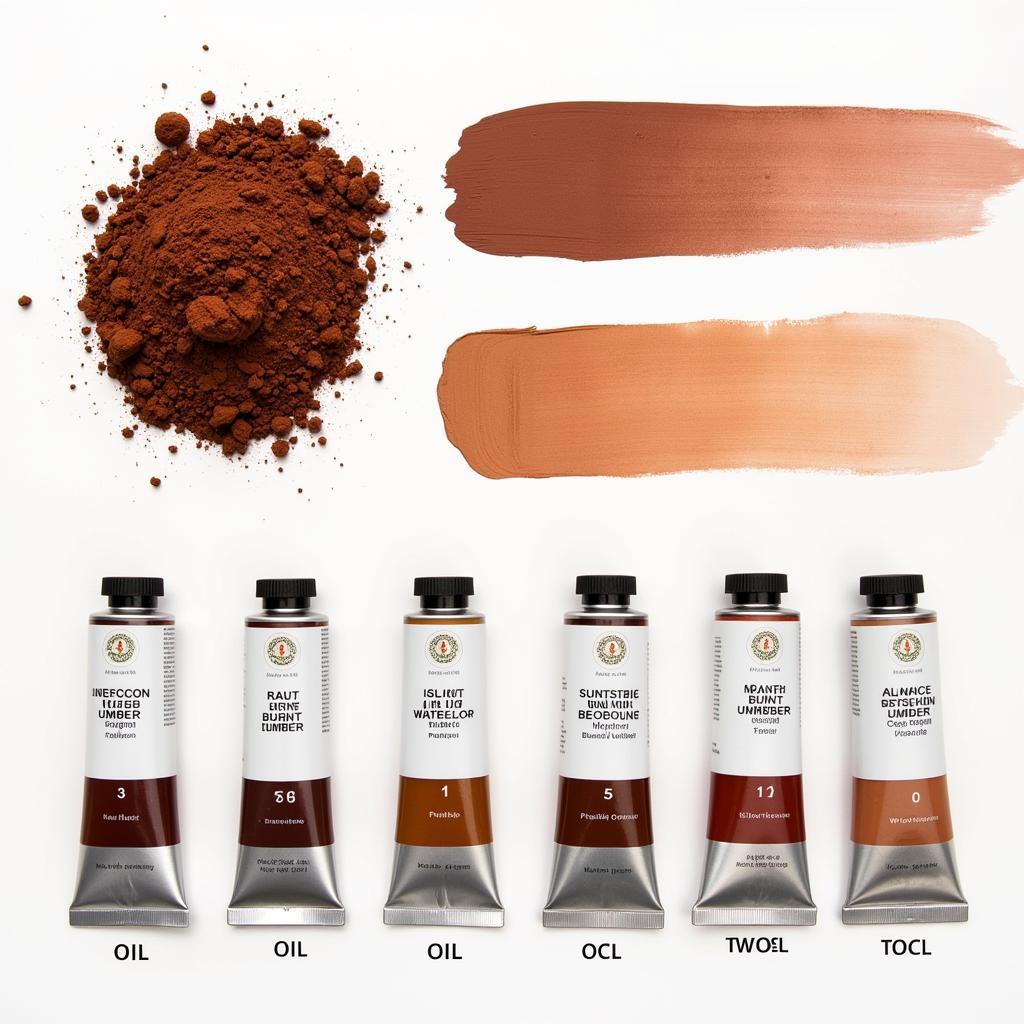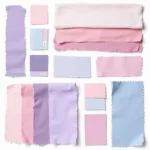Burnt umber is a rich, earthy brown with a reddish undertone. It’s a versatile color, used in everything from oil painting to house paint. It’s a complex color that adds depth and warmth to any project. For those curious about mixing or contrasting colors, check out what colors contrast orange.
Burnt umber is a natural earth pigment, originally made by heating raw umber, a yellowish-brown clay containing iron oxide and manganese oxide. The heating process, known as calcination, oxidizes the iron, changing the color from a yellowish brown to the deep, reddish-brown we recognize as burnt umber. This process also alters the pigment’s transparency, making burnt umber more opaque than its raw counterpart. This makes it ideal for layering and glazing techniques in various artistic mediums. If you’re interested in creating realistic skin tones, knowing how to make skin tone color with paint can be invaluable.
Understanding the Nuances of Burnt Umber
Burnt umber isn’t just a single, flat color. Its depth and complexity allow for subtle variations depending on the manufacturer, the concentration of the pigment, and the medium it is mixed with. You can find burnt umber in oil paints, acrylics, watercolors, gouache, and even colored pencils. Each formulation offers a slightly different take on this classic color.
Exploring the History and Origins of Burnt Umber
Burnt umber has a long and storied history, dating back to prehistoric cave paintings. Evidence suggests that early humans utilized this natural pigment to create their stunning works of art. Throughout the Renaissance and Baroque periods, burnt umber was a staple in the artist’s palette, frequently used for shadows, underpainting, and creating rich, earthy tones in landscapes and portraits. Want to know more about mixing skin tones? Check out how to make skin color with paint.
 Burnt umber pigment and paint tubes
Burnt umber pigment and paint tubes
Using Burnt Umber in Art and Design
Burnt umber’s versatility makes it a popular choice for a variety of applications. In painting, it’s an excellent choice for depicting natural elements like wood, soil, and rocks. It can be mixed with other colors to create a wide range of browns, from warm sepia tones to cool chocolate hues. Its opaque nature allows it to be used for glazing, adding depth and richness to underlying colors.
Mixing Burnt Umber with Other Colors
Burnt umber’s reddish-brown base allows it to interact beautifully with other colors. Mixing it with white creates a softer, more muted brown, perfect for creating highlights or a vintage feel. Adding yellow brightens the color, while blue creates a deep, almost black, shade. Experimenting with different color combinations will unlock the full potential of this versatile pigment.
Burnt Umber in Interior Design
Beyond the artist’s studio, burnt umber has found a place in interior design, where it’s valued for its grounding and sophisticated presence. It can be used as a wall color, adding warmth and depth to a room. It pairs well with natural materials like wood and stone, creating a cozy and inviting atmosphere. Consider finding out what colors look good on me quiz to discover your personal color palette.
“Burnt umber is one of my go-to colors for creating a sense of warmth and sophistication in a space,” says renowned interior designer, Amelia Dubois. “It’s a timeless classic that never goes out of style.”
Choosing the Right Shade of Burnt Umber for Your Home
When incorporating burnt umber into your home decor, consider the existing color palette and the overall mood you want to create. Lighter shades of burnt umber can create a cozy and inviting atmosphere, while darker shades add a touch of drama and elegance.
“The key to using burnt umber effectively is to balance it with other colors and textures,” adds Dubois. “Too much can feel overwhelming, but the right amount can truly transform a space.” Perhaps you’re interested in understanding the interplay of color? Learn more about what color does orange and black make.
Conclusion
Burnt umber, a rich, reddish-brown derived from natural earth pigments, is a versatile color with a long history in art and design. Its unique properties make it ideal for various applications, from painting and drawing to interior design. Whether you are an artist, designer, or simply appreciate the beauty of color, burnt umber offers a timeless and sophisticated appeal.
FAQ
- What is the difference between raw umber and burnt umber? Raw umber is a yellowish-brown, while burnt umber is a reddish-brown due to the calcination process.
- What colors go well with burnt umber? Burnt umber pairs well with a variety of colors, including creams, whites, blues, greens, and yellows.
- Can I use burnt umber in watercolor painting? Yes, burnt umber is available in watercolor formulations and is a staple in many watercolor palettes.
- Is burnt umber a warm or cool color? Burnt umber is generally considered a warm color due to its reddish undertones.
- Can I mix burnt umber with other colors to create different shades of brown? Yes, burnt umber can be mixed with a variety of colors to create a wide range of browns.
When you need support, please contact Phone: 0373298888, Email: [email protected] or visit us at 86 Cau Giay, Hanoi. We have a 24/7 customer service team.
